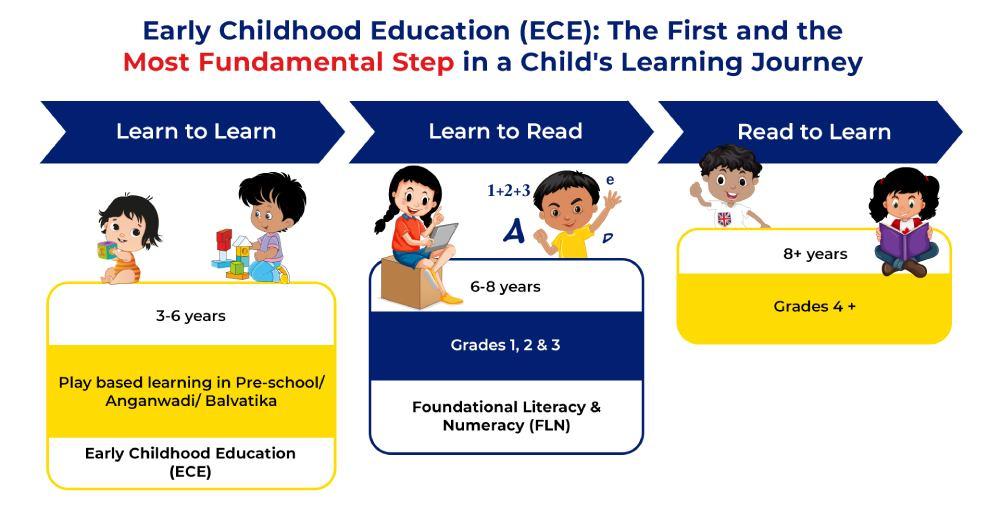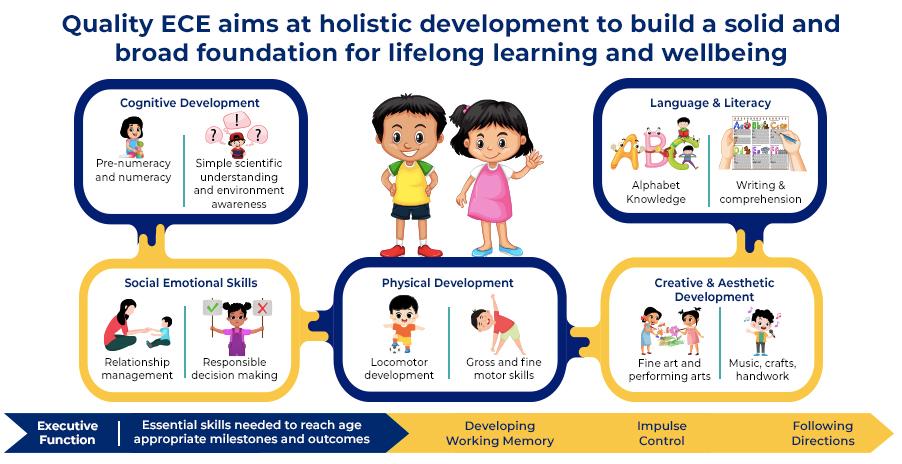Early Childhood Education
Building Strong Foundations: Examining Early Childhood Education in India
Read full reportECE in India: A Quick Glance
While both the National Education Policy (NEP) 2020 and National ECCE (Early Childhood Care and Education) Policy 2013 recognize the critical importance of investing in young learners, we find that there is inadequate provision and lack of prioritization of ECE in both Anganwadis and government pre-primary sections in India. This leads to poor learning levels of children before they enter grade 1.
Anganwadis have very few (and decreasing) 5 year olds (35.3%), when compared to 4 year olds (61%) (ASER 2022)
School readiness outcomes are alarmingly low, with only 24% of 5-year-olds being able to do a simple listening comprehension task (ASER 2019)
Only one in six (17%) 5-year-olds could complete a simple pictorial pattern (IECEI Study, 2014)


